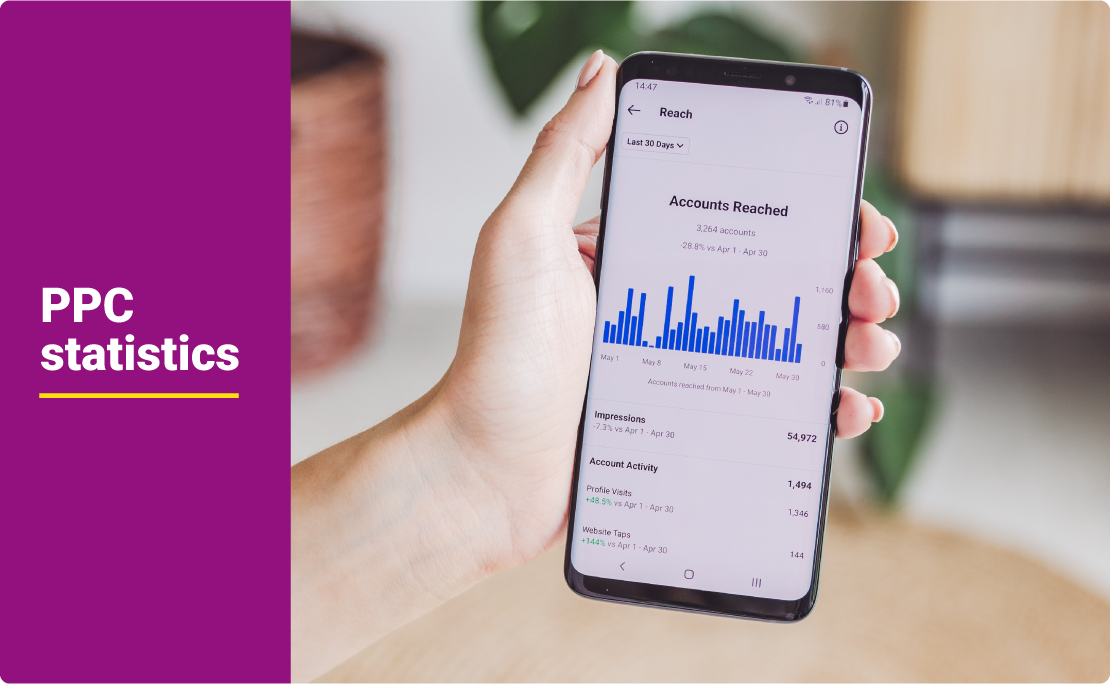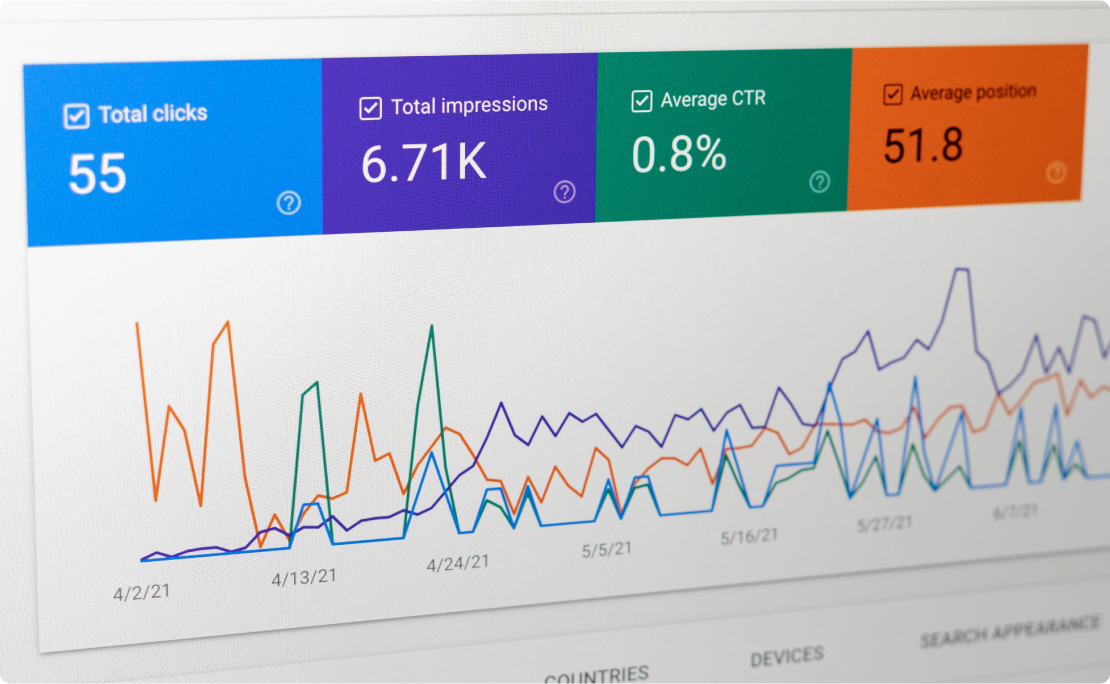Taking some time to check the state of the advertising industry is a smart
step before putting your budget, strategy, and campaigns into place.
Part of assessing the industry is to find the right advertising channels
to use (for example, social media, video, search) and identify trends
worth taking part in.
Use these statistics to design advertising campaigns that will stand up
against your competitors and be well-received by your target market.
The definition of paid advertising
Paid advertising is the
placement of adverts on the internet that a business pays
for.
Rather than owned adverts, these campaigns are run on an advertising
budget set by a company with the expectation of a profitable return on
investment.
Paid adverts can also serve to
increase brand awareness as well as
generate sales and revenue. Examples include
pay-per-click (PPC) adverts on Google search results, Facebook adverts, or
YouTube adverts.
PPC statistics
1. Digital ad spend is expected to hit USD $684.10 billion in 2023
(Source: Statista, 2022)
Ad spending by businesses is only increasing.
Digital ad spend is forecast to make up over 50% of global ad spend. This
consists of social media, video, and search advertising.
The search advertising segment alone is projected to reach USD $289.50
billion in 2023, according to Statista.
By 2027, the total digital ad spend through mobile will be 69%. These
figures show how profitable digital advertising is for eCommerce brands.
2. Google owns 92.58% of the global search market share
(Source: StatCounter, 2022)
Google is the king of search advertising with search engines such as Bing
and Yahoo miles behind.
The second largest share is Bing with 3.03% followed by Yahoo with 1.24%.
Investing in a
Google Adwords campaign
will see a higher ROI than creating paid ads with its competitors.
3. Four in ten consumers in the UK don't feel protected from scam adverts
(Source: Which, 2022)
Forty per cent of online users don't feel that social media platforms are
doing enough to prevent fraudulent paid ads.
One in six British people has been targeted by scammers on social media.
This information highlights the scepticism some users have with paid
adverts, making it critical to design campaigns that will encourage
trust in your brand.
4. 58% of US (54%) and UK (61%) consumers feel positive about receiving
personalised adverts online
(Source: Marketing Tech News, 2021)
Today's consumers have high expectations from brands and prefer
personalised experiences
with advertising.
Survey respondents commented that they are happier to be exposed to
adverts that are tailored to their interests.
They recognise that this will give them a better online experience rather
than being exposed to brands they are unlikely to buy from.
5. Over 50% of interactions on an advert happen on mobile devices
(Source: WebFX)
As of October 2022, there are 4.4 billion global smartphone users as per
DataReportal. These users have internet access and are a huge market for
online businesses.
Around 5.07 billion (63.5%) of people in the world have internet access.
It makes sense that over half of interactions on paid ads are from
smartphone users.
The key takeaway is to ensure your eCommerce website is responsive and
functional for mobile users visiting from your paid adverts.
6. Click-through rate increases by at least 35% when using ad copy
specific to a buying persona
(Source: Search Engine Land, 2022)
Niche targeting is when you create adverts to speak to a specific type of
online buyer. This audience, also known as a "market segment," will have
certain demographic information such as age range, profession, household
income, and interests.
Designing ads with one of these
buyer personas
in mind creates a highly personal experience for that audience, increasing
their likelihood to click through and view your website.
An example given from Search Engine Land is the difference between selling
the benefits of a product to parents and non-parents. Families will be
concerned with safety whereas those without children will be more
interested in other benefits.








































